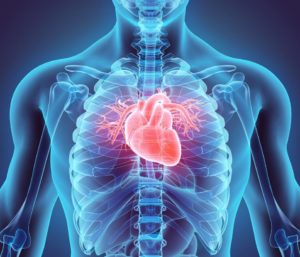This month’s reading group was focused on the relationship between interoception and autism. We provided a reading about how being more in connection to your body can lead to lower levels of anxiety, including for those with autism, and a video providing an overview of interoception. This reading group followed a fascinating lab meeting at the Chatlab by Professor Sarah Garfinkel about her research and intervention on this topic.
What is Interoception?
Interoception is your sense of what is going on within your body – for example, hunger, thirst, and sensations of warmth and cold. Having low awareness of interoception can affect your ability to interpret and manage your emotions. For example, someone may experience ‘butterflies in the stomach’ but not appreciate that this is a sign of nerves. There is some evidence that autistic people often experience lower levels of interoception. This can then lead to behaviours such as lack of control over toileting, not knowing to eat when hungry, or failing to avoid danger. Explosive emotive behaviour, for example having a meltdown, can also be linked to not noticing interoceptive cues.
Increasing Interoception by listening to your heart
In the ChatLab talk (see a similar online talk here), Professor Garfinkel spoke about her research on the topic and an evaluation of an intervention developed to decrease anxiety in autistic people. There’s a stereotype that autistic people have low empathy. In fact, Prof Garfinkel found a study measuring empathy response to others pain. Brain scans showed lower responses from autistic adults but ignored that skin conductance tests showed higher levels of conductance in autistic than in neurotypical adults. This finding suggests that people may feel the emotions but may not experience direct awareness of them. She highlighted the high levels of anxiety present in many autistic adults. The intervention was created to help participants be more attuned to their bodily sensations and therefore able to manage their feelings better, with the hypothesis that this could reduce anxiety. The participants first did a heartbeat tracking task (counting their own heartbeats). This was a baseline to see if they got more accurate after the intervention. They received training that involved them doing the heartbeat task after mild exertion (to make their heartbeat more apparent) with the idea of increasing accuracy on the heartbeat task. Those who did this training showed lower anxiety at the end of the intervention, compared to a group who received a different form of emotion coaching. This reduction in anxiety was greater for those who became more accurate at interoception. Participants also reported heightened general body awareness and a sense of calm when focusing on their heartbeat. This happened for around a third of the participants, and the difference was still seen three months later. Prof Garfinkel said this could be developed further to help autistic people to manage their emotions.
We discussed whether this intervention could be delivered online, making it accessible to a wide range of people. We talked about how it might be adapted for those with lower verbal abilities and those who may find it hard to follow the training process, for example, by using a stethoscope to make hearing the heart easier. One member wondered how mindfulness might be used to improve interoception. Online intervention might suit some but not others. A group member suggested ways of building accountability might help.
Ways to increase interoception
Some people mentioned other approaches that related to interoception, though we haven’t looked into the evidence on these. The Multidimensional Assessment of interoceptive awareness (MAIA) questionnaire aims to measure interoceptive awareness by looking at a variety of behaviours such as perception of physical pain, breathing and emotional awareness. A sensory diet (a collection of sensory exercises) is a method that has been used to try to raise body awareness. A sensory diet can focus on a different sensation e.g., developing proprioception (awareness of your own body in space), by picking up weights or carrying a backpack.
Another approach that has been suggested for helping autistic children to develop interoceptive skills is using a body check chart. This can be created by drawing around the child on a large piece of paper. They can then complete activities such as pointing to specific parts of the paper body to describe where they feel different emotions. A parent/carer could help the child by allocating each emotion colours and then when they feel these they can be labelled. This made us think of the local Just Right programme, which supports children to recognise and manage feelings using colours. Could this support children to attend to the body’s signals and to recognise patterns in how they feel?
One member of our group highlighted how there is still a lack of useful resources and information available about interoception. She spoke about how ideas to improve interoception often focus on children and are not so suited to adults.
One member of the group highlighted communities such as Facebook groups that provide regular reminders to do things such as drink water or eat a meal. This is a simple intervention that some individuals find very useful. A social group such as this also helps to create a sense of community and not feel alone with difficulties in interoception.
New work such as Sarah Garfinkel’s heartbeat intervention is hopefully paving the way in providing a broader range of interventions and research for children and adults to use.
The next reading group is reviewing support for autistic students in schools and will be on Tuesday 7th December 4-5pm, to join – email: acorns@sussex.ac.uk
